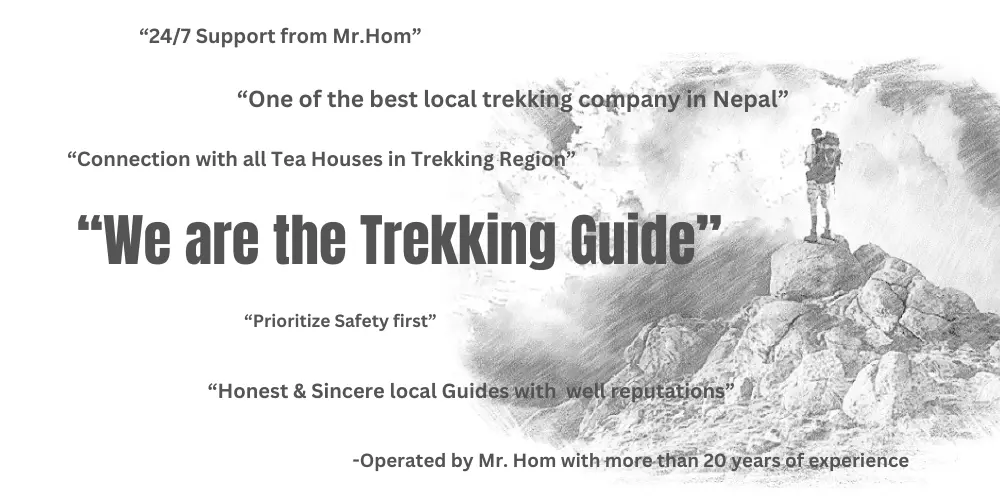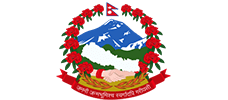Things to do upon your Arrival at Kathmandu before your trek:
Upon your arrival at Kathmandu’s Tribhuvan International Airport, a representative from our company will be there to extend a warm welcome to you. You will then be swiftly transferred to the hotel in a private vehicle. Upon reaching the hotel, you can check in and take some time to relax. At the scheduled time, our company owner, Hom Rana, will personally greet you for the trip briefing on the Everest Base Camp Trek, providing comprehensive details.
During this briefing, we will carefully go through your packing list to ensure you have everything you need. Additionally, you will have the opportunity to meet your trek guide and receive essential items such as the company duffel bag, t-shirt, cap, and trekking map.
In the evening, we cordially invite you to join us for a welcome dinner hosted by the company. Following this, the next day you will embark on a flight to Lukla to commence your trekking adventure.
Lukla Flight Information (Kathmandu & Ramechhap):
We would like to update you on important changes regarding Lukla flights during peak trek seasons (March, April, May, October, and November). Due to increased air traffic in these months, Lukla flights will be operated from Manthali airport in Ramechhap instead of Kathmandu. However, during non-peak seasons (January, February, June, July, August, September, and December), Lukla flights will continue to operate from Kathmandu.
If you are catching a Lukla flight from Ramechhap, please be advised that you need to depart from Kathmandu early in the morning, around 1:30 to 2:00 AM. The journey from Kathmandu to Ramechhap takes approximately 4-5 hours. Your guide will arrive at your hotel at the specified time to pick you up and drive you to Ramechhap.
It’s important to note that Lukla flights may face disruptions due to factors such as bad weather, airline technical problems, and other unforeseen circumstances. Therefore, we recommend planning for an additional 2-3 days as a contingency to accommodate potential delays.
We appreciate your understanding and cooperation in adapting to these changes for a smoother and more enjoyable trekking experience.
Tea House Meals During EBC Trek:
Nepal Peak Adventure consistently provides our clients with top-notch lodging and dining options. Our Everest Base Camp package includes three full-board meals: breakfast, lunch, and dinner, complemented by tea or coffee at each meal. Throughout the trek, you can choose your meals from the teahouse menu, which offers a variety of local and international dishes, ensuring you maintain energy levels with nourishing meals.
You have the flexibility to opt for Nepali, Western, or Indian cuisines during the entire trek, and the cost of food is covered in the package, allowing you to relish your preferred meals. We highly recommend trying Dal and Bhaat, a typical Nepali dish. For day hikes, it’s beneficial to carry energy bars or dried fruits and stay well-hydrated.
For health reasons, we strongly advise against consuming non-vegetarian items throughout the trek.
Typical Day during EBC trek:
Your trek officially begins upon your arrival in Lukla. Each day, a typical routine commences with a substantial breakfast served between 6:30 to 7:30 AM. After breakfast, you set out on your trek, progressing toward the planned destinations. Before starting the trek, it is advisable to pack all the essentials for the day hike in your backpack, while your duffel bags will be carried by the porter at their own pace.
Throughout the journey, you will make regular stops for short breaks to hydrate, have snacks, or capture photos. Typically, after three to four hours of trekking, a lunch break is scheduled along the route.
Upon reaching the designated overnight stay, you have the opportunity to relax or explore the surrounding area. In the evening, around 6 to 7 PM, dinner will be served. Following dinner, you can engage in conversation with your guide, who will also brief you about the plan for the next day. Subsequently, you can choose to retire to bed or spend your time playing cards, reading books, or simply relaxing at your own pace.
About Wifi, Charging, and Electricity Facility in Tea Houses:
Upon your airport arrival, it is recommended to acquire a Nepali SIM card (with Ncell being a suggested choice) for the duration of your entire trek. You can opt for a tourist data pack that remains accessible for most of the trek, covering locations like Lukla, Namche, Phakding, and Gorakshep. While teahouses generally offer WiFi facilities, there are additional charges ranging from approximately 300-500 per device. Hence, having a data pack proves beneficial in these regions.
In Tyangboche or Deboche, Dingboche, and Lobuche, you can obtain a WiFi card from Airlink. They offer an unlimited internet package at the cost of NRS 700 for 24 hours and NRS 1200 for 48 hours. This Airlink WiFi is accessible in almost all teahouses along the way but can only be logged in on one device.
For charging, an extra fee is required, depending on the devices and duration. Free charging is available until Namche, where there is an electricity supply. However, after Namche, particularly from Dingboche onward, all teahouses rely on solar energy, and charging your devices is not free. The pricing for charging varies from place to place. Note that charging may be slow and challenging at times due to low solar energy.
Best season for Everest Bsae Camp trek 14 Days:
The key ingredient for a successful Everest Base Camp trek is timing it right. The optimal seasons for trekking are spring (March to May) and autumn (November to December). However, it’s worth noting that during these peak seasons, the trail tends to be crowded with fellow trekkers. If you prefer a less crowded experience, choosing the shoulder times such as post-monsoon and pre-winter is an option, and Nepal Peak Adventure can seamlessly arrange it for you.
Preparation for trekking in Nepal is a crucial aspect, and when it comes to packing gear, careful selection of the right materials is essential. A well-thought-out preparation and packing strategy contribute significantly to the success of the trek.
We conduct a thorough packing list check during the briefing session in Kathmandu and provide you with a company duffel bag. It’s important to note that there is a weight limit of 20 kg for luggage carried by our porter, with one porter assigned for two trekkers. Therefore, each trekker’s luggage weight should not exceed 10 kg. We kindly request you to pack accordingly.
From headwear to footwear, here is the list of gear you will need to complete the trekking in Nepal properly.
Basic Gears and Equipment:
- Duffle Bag (Company will provide you with a 50-70 liters duffle bag)
- Day Pack (35-45 liters recommended) with rain cover
- Trekking Poles (1 pair)
- Four-season sleeping bag (can be rented at Thamel)
- Sleeping bag liner (optional)
Personal First Aid Kit and Medications:
- Our guides will carry a first aid kit provided by the company. However, you can have your own with the consultation of your doctor.
- Water bottle / Water bladder
Headwear:
- Beanie (1 Nos)
- Sun hat or Cap (we provide a free company cap) (1 Nos)
- Polarized Sunglass (1 Nos)
- Buff/Neck Gaiter (1 Nos)
- Headlight (1 Nos)
Body Wear:
- Insulating layers/thermal wear (2 pairs)
- T-shirt (2 pairs)
- Full sleeve t-shirt (thin and thick) (1 each)
- Waterproof and windproof outer layers (1 Nos)
- Fleece jacket (1 Nos)
- Down jacket (Company provides)
Lower Body:
- Hiking Pants (2 pairs)
- Comfortable pants for the teahouses (1 Nos)
- Hiking shorts (optional)
- Waterproof and windproof pant (optional)
Hand Wears:
- Fabric liner gloves (1 pair)
- Hard-shell outer glove (1 pair)
Feet Wears:
- Fabric warm socks (2/3 pairs)
- Hiking socks (2/3 pairs)
- Trekking boot high ankle with a good grip recommended (1 pair)
- Casual shoes for the teahouses
- Gaiters (optional)
Personal Utilities:
- Undergarments (according to your needs)
- Pajamas or sleeping clothes (optional)
- Sunscreen cream
- Toothbrush and toothpaste
- Toiletries
- Snacks (chocolates, dry fruits, energy bars, etc.)
- Playing cards
- Power banks
Documentation:
- Valid passport and necessary permits
- Nepal visa
- Extra passport-sized photos
- Travel insurance details
- Emergency contact information
- Money (local currency and small denominations)
Note: Most of the gear can be rented in Thamel, Nepal, so you don’t need to carry heavy luggage. Also, some of the gear will be provided to you by Nepal Peak Adventure.
“Feel free to inquiry or ask any question. We love to chat with avid travelers like you.”
We are a Eco-Friendly Tour Operator | Eco-friendly Guides & Porters
Licensed English Speaking Guide | Trained for any Emergencies
No hidden charges, 100% money return upon cancellation of trip | See our Cancellation Policy









